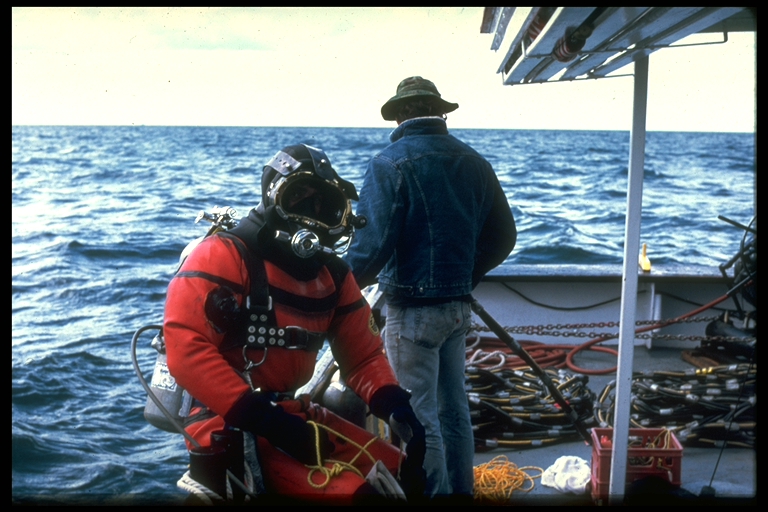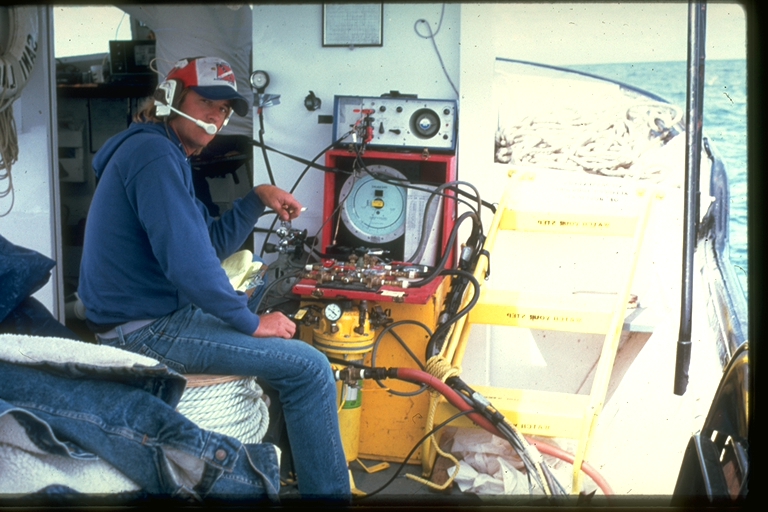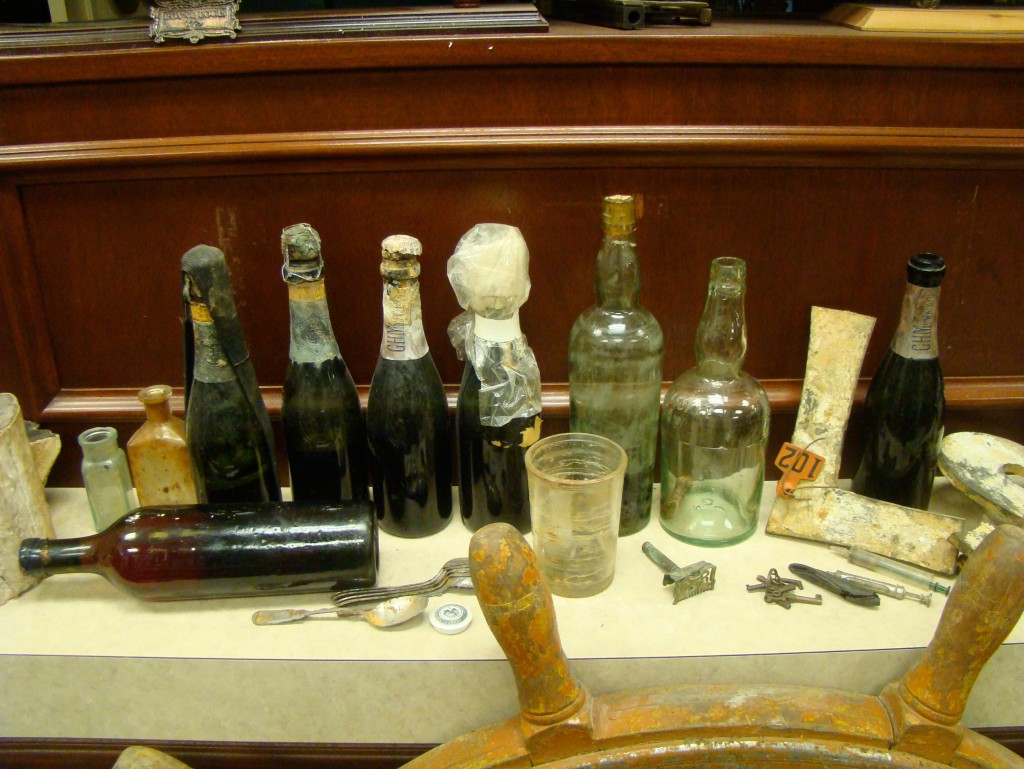people
HISTORY & SALVAGE OF THE SS REGINA
The following article about the history, discovery and salvage of the
SS Regina in Lake Huron was originally published in Treasure Quest
magazine. It has been slightly revised for posting here.
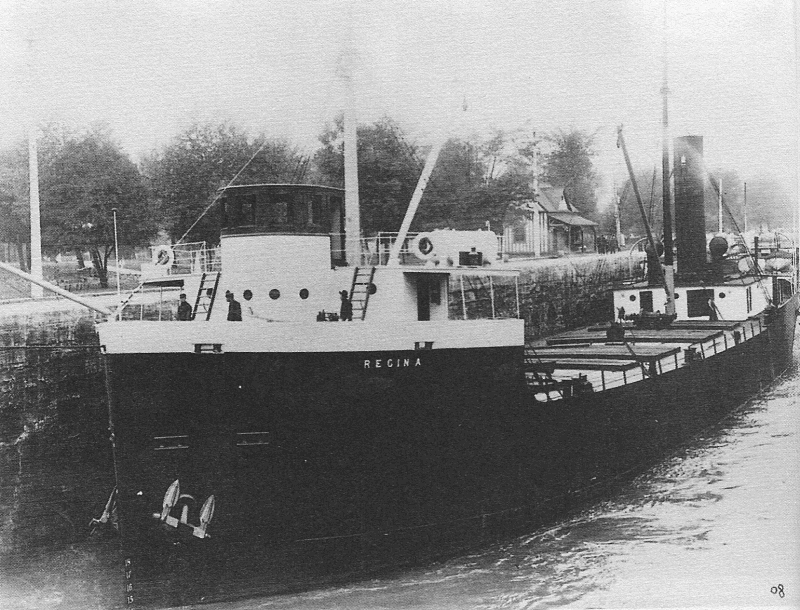
1910 photo of Canadian packet freighter SS Regina.
Courtesy of the Great Lakes Historical Society, Vermilion, Ohio
“Mystery Wreck of the Great Lakes”
by Charles King
In 1987 a team of divers funded by a Canadian firm began a joint venture, with a young Michigan diver, in a quest for two million dollars in gold and even more in artifacts. Their venture was technically successful, even though they didn’t find the gold. Instead, they found and recovered a fortune in artifacts and once again proved that successful shipwreck ventures do not have to be limited to Spanish galleons, or to the saltwater oceans of the world. In this case, the expedition took place in just over eighty feet of fresh water in Lake Huron, off Port Sanilac, Michigan.
The Regina was lost in what has since been described as the worst storm in the history of Great Lakes shipping. The storm sank at least a dozen ships, stranded more than a score of other vessels, and claimed at least two hundred and fifty lives.
Until Wayne Brusate’s discovery of the wreck, the fate and final resting place of the Regina was considered the greatest mystery of the “Great Storm” of the Great Lakes.
The screw steamer Regina, official number 124231, was 249.7′ in length, 42.6′ in breadth, 20.5′ in draft, and measured 1,957 tons. She had an iron hull, and was built at Dumbarton, Scotland, in 1907. Her triple expansion engine, built by Muir and Houston of Glasgow, Scotland, was rated at 650 horsepower. The Regina began her Great Lakes career in 1908 and was part of the Canadian Interlake Line and was commanded by Captain Edward H. McConkey when she was lost.
The wreck site is located at latitude 43°20.24′ North, longitude 82°26.76′ West (the intersection of Loran-C lines 30801.5 and 49535.0).
The wreck is upside down with her bow heading almost due North. The water temperatures range from 35° F. to 65° F. Visibility varies from zero to fifty feet. The extreme water depth on the site is eighty-three feet and is located on the westward side of the stern. A heavy current frequently runs over the site and storm surge can disturb artifacts on the bottom.
The wreck, which is largely intact, was fortuitously discovered in 1986 by Wayne Brusate a commercial diver from Marysville, Michigan, while demonstrating the usefulness of a WesMar sidescan sonar during a search for a sunken tugboat.
Brusate contacted renowned shipwreck expert Dr. E. Lee Spence of Charleston, South Carolina for help. Spence brought in Freedom Marine Ltd., a Vancouver company that specialized in treasure hunts to fund the project, and organized the initial archeological/salvage effort on the Regina.
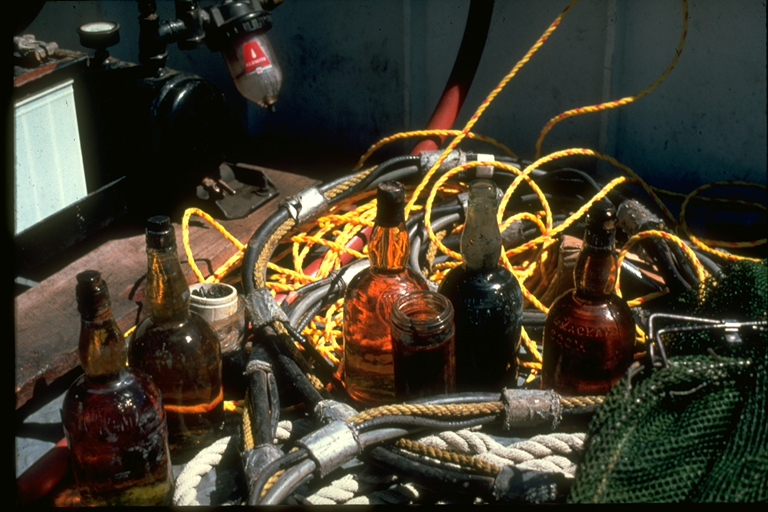
Bottles of Dewar’s Scotch salvaged from the Regina, shown alongside of diver’s surface supplied air hose.
1987 photo courtesy Shipwrecks Consultants™.
Some of the companies involved to date in the project have included: Commercial Divers and Marine Services Inc. (of Michigan which actually did the diving); Shipwreck Consultants™ (E. Lee Spence’s company out of Sullivan’s Island, South Carolina, which provided consulting services); Get Wet Video™ (Randy Lathrop’s company out of Fort Pierce, Florida, which video taped the expedition); and ORCA Industries and Fisher Research Laboratories (which provided specialized equipment).
Volunteers from the local area and several members of the Atlantic Alliance for Maritime Heritage (a Washington, D.C., based non-profit organization) have helped gather archeological data.
The work was conducted under salvage permit (#87-17-3U) issued to Brusate by the Michigan Department of State and the Michigan Department of Natural Resources. That permit requires that the work be performed under very strict but fair guidelines, and requires that certain archeological data be recorded. The permit prohibited the disturbance of human remains (none were found), and required that a portion of the artifacts be donated to local museums. The permit allowed the balance of the artifacts to be sold to the general public.
The ship is fairly intact and the divers still believe the safe can be found. No plans were ever found for the ship, so the divers simply went from room to room, clearing debris and trying to identify the captain’s cabin in hopes of locating the safe.
Due to the enormous public interest in shipwrecks, Michigan is expected to eventually benefit from millions of added tourist dollars, as divers flock to the Regina and other, yet to be discovered, wrecks for underwater sightseeing.
If it were not for the cooperation between private enterprise and the State of Michigan, expeditions like this would be cloaked in secrecy. Without the cooperation of all parties, the public would never even learn about the discovery of wrecks like the Regina.
The Regina and the area around it were recently designated an underwater preserve to help protect the site from unrecorded salvage and/or looting.
Sport divers are not allowed to remove any artifacts, but they are welcome to explore the wreck. Local dive charter businesses already carry as many as fifty diving tourists to visit the Regina site on a warm sunny day.
Regina divers have made exciting discoveries and report that many tons of artifacts are still lying in and around the wreck.
The freighter carried a valuable general cargo, which included aged liquor and fine wines. Some of the liquor is believed to date from before the turn of this century. Divers are using archeological techniques to maximize the recovery of both data and cargo.
Spence nicknamed the Regina the “Good Luck Wreck” as numerous horseshoes were found in her cargo hold. On Spence’s first dive to the wreck he recovered several bottles of Scotch and on his last, his air gave out while he was inside the forward cabin area of the upside down wreck, and he was lucky to make it to the surface without a problem.
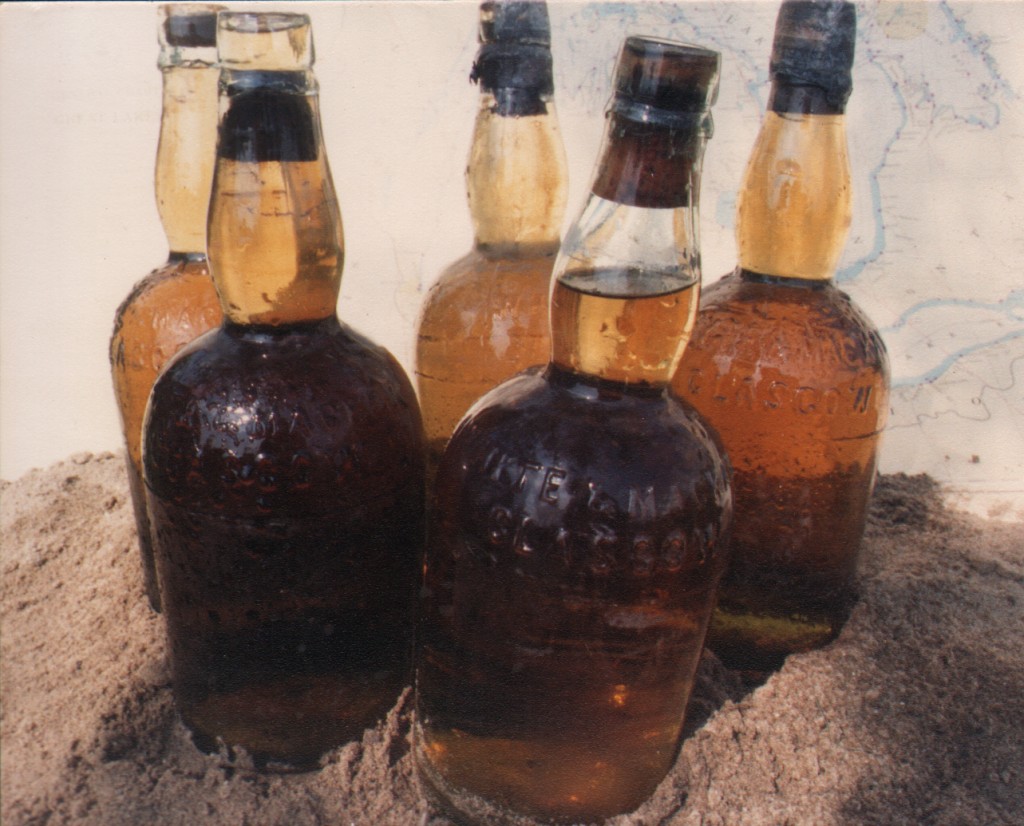
Still full bottles of Whyte & McKay Scotch from the wreck of the Regina.
Photo courtesy Wayne Brusate
Spence and Brusate’s team brought up thousands of individual artifacts, including large quantities of extremely valuable wines and whiskies (Spence’s favorites were the G.H. Mumms Champagne, the Veuve Clicquot Champagne and the Dewar’s Scotch). Spence described both Champagnes as “quite dark in color but as having an excellent taste.”
Recovered artifacts also included bottles of hand lotion, matches, razors, jars of preserves, bottles of ketchup, medicines, files, electric light bulbs, etc. Two binnacles (one still containing a working compass), two telegraphs, the ship’s bell, and a number of navigational lights have also been recovered. The condition of the artifacts was excellent due to the cold fresh water.
Contemporary newspaper accounts reported $36,000 worth of Champagne as part of the Regina’s cargo. The salvors have recovered two brands of Champagne which was being imported from Reims, France, (Veuve Clicquot and G.H. Mumm).
When Spence married, he surprised the approximately two hundred guests at their sit-down wedding reception by opening some of the seventy-four year old G.H. Mumm Champagne found on the wreck. After a round of toasts, the Spences poured some of the ancient Champagne into a large punch bowl where it was mixed with some more recent vintage Champagne, which was also bottled by G.H. Mumm. All of the guests were then invited to try some. Mumm’s Champagne was also served at the tables. The shipwreck Champagne was in fantastic condition, the cork still popped and its flavor was still robust. Despite what many would have expected, the Champagne’s taste had actually improved over the years.
The expedition received international attention, with articles in newspapers, magazine, and interviews on radio and television. An article about Spence and the expedition afterwards appeared in People magazine under the title “Ho-Ho-Ho and a Bottle of MUMM.”
Due to the costs, versus profit, the salvors were forced to make every effort to maximize diving time and thereby cut overall costs, which ran into the thousands of dollars per day. Fortunately, recent advances in diving equipment manufactured by Orca Industries and Fisher Research Laboratories helped to keep those costs down.
The Regina divers used two types of small computers to almost double their actual bottom time. The “Edge” and the “Skinny Dipper” computers (both made by Orca Industries) were used to measure the diver’s actual time at each depth, and, using the known rate of absorption and release of gasses by twelve types of human tissues under pressure, constantly compute the diver’s remaining safe dive time. Randy Lathrop, head of Get Wet Video™, who was taping the work on the Regina, immediately went out and bought an Orca “Edge” to take back with him to Fort Pierce, Florida.
Although they weren’t a necessity, most of the divers used light weight drysuits, such as those made by O.S. Systems and Viking. Drysuits were used rather than just wetsuits to allow for more comfort while working in the cold waters around the wreck. While more expensive than using wetsuits, the added comfort meant more productivity for the divers. The suits allowed for more control of buoyancy and therefore also add to the diver’s safety. Spence says he prefers the light weight suits to the heavier foam suits (like Poseidon’s “Unisuit”), and has even used similar suits (without the heavy undergarment) in the warm waters of the Caribbean.
The divers also used several hand held “1280-X Aquanaut” metal detectors manufactured by Fisher Research Labs. The detectors have an automatic discrimination mode which allowed the divers to differentiate between various metals. The metal detectors allowed for more effective searching of the sands around the wreck. Numerous artifacts were found with these machines.
Collette Witherspoon who was actually the second person to ever dive the Regina, used one of the detectors to successfully trace the Regina’s buried anchor chain for a distance of several hundred feet from the wreck. It was Witherspoon’s first time ever using a metal detector of any sort and she loved it.
The discovery of the freighter’s anchor chain payed out across the bottom helped establish that the Regina had already come to anchor before it foundered. The ship having been anchored, coupled with the fact that her engine room telegraph was found set in the “STOP” position, and the fact that no collision type damage of any type was found, and the fact that both her life boats were missing, were important clues to the cause of the ship’s actual loss. The inescapable conclusion is that the Regina foundered at anchor after her crew had abandoned ship.
The Regina had not been sunk in a collision as had been thought at the time of her loss. The towering seas had simply been too great for the ship to survive. The Regina’s captain and crew must have realized she was doomed and abandoned her.
The confusion over the Regina’s final fate was caused when the bodies of her crew washed ashore on the same stretch of beach as the bodies of the crew of another vessel lost in the same storm. The other vessel was the Charles S. Price, a bulk ore carrier, with a load of coal. At least one of the dead from the Price was wearing a life jacket from the Regina. The natural question was how had it happened?.
Spence now believes that the lifeboats carrying the crew of the Regina had come across the crew of the Price, who were struggling in the frigid waters. The Price had apparently been bowled over by a giant wave before her own lifeboats could be launched. The men of the Price were only spared a few more hours before everyone died. The Regina’s lifeboats overturned in the crashing seas along the Canadian shore of Lake Huron, and the mystery was begun.
As this is written, the icy waters of Lake Huron have just started warming back up. Divers will once again be diving on the Regina on a regular basis.
A large number of valuable artifacts were recovered by Spence’s and Brusate’s divers. Some of the artifacts were turned over to museums, while others were sold at auction. (Editors note: bottles of Scotch and Champange that went for under a hundred dollars in 1987 would now go for thousands.)
Although the safe wasn’t recovered thousands of other items were. If the safe is ever recovered you can bet there would be more expeditions to the Great Lakes.
In a conversation with Wayne Brusate it was learned that Brusate had given up his fight against “City Hall.” Brusate had been defending himself against an attempt by two government employees (of the local sheriff’s department) to claim a share of Brusate’s discovery. It seems Brusate had been demonstrating his new side-scan sonar aboard the sheriff department’s boat when the wreck was discovered. Even though they were there when Brusate found the wreck, I don’t understand why they (as “individuals”) would have any claim. It certainly wasn’t their boat, and they didn’t even dive on the site the day the wreck was found. From what I’ve seen, it wasn’t fair. Brusate gave up the fight because he simply could not afford to fight any more. Too bad. Spence is absolutely convinced that Brusate is a good and honest man. Spence also says Brusate deserves the lion’s share of the credit relative to the Regina.
Also read about the 1913 Storm and Wayne Brusate’s discovery of the Regina in “Touring the Great Lakes” (Cobblestone publishing, May 1988, ISBN 0382403908).
2002 © Copyright Narwhal Press Inc., all rights owned and reserved by the author.
See this video: Wreck of the Regina off Port Sanilac, MI
See this video: Port Sanilac 2010
See this video: Diving the Charles S. Price
Read about its discovery: Divers Find Shipwreck
Read about 100th anniversary: Time to Tell the story
Read more details: Wikipedia
Read People magazine article re Regina: HO-HO-HUM and a Bottle of MUMM
Discussion
-
Sea Research Society « Shipwrecks.com October 4, 2013
-
1913 Wreck of the SS Regina « Shipwrecks.com September 22, 2013
